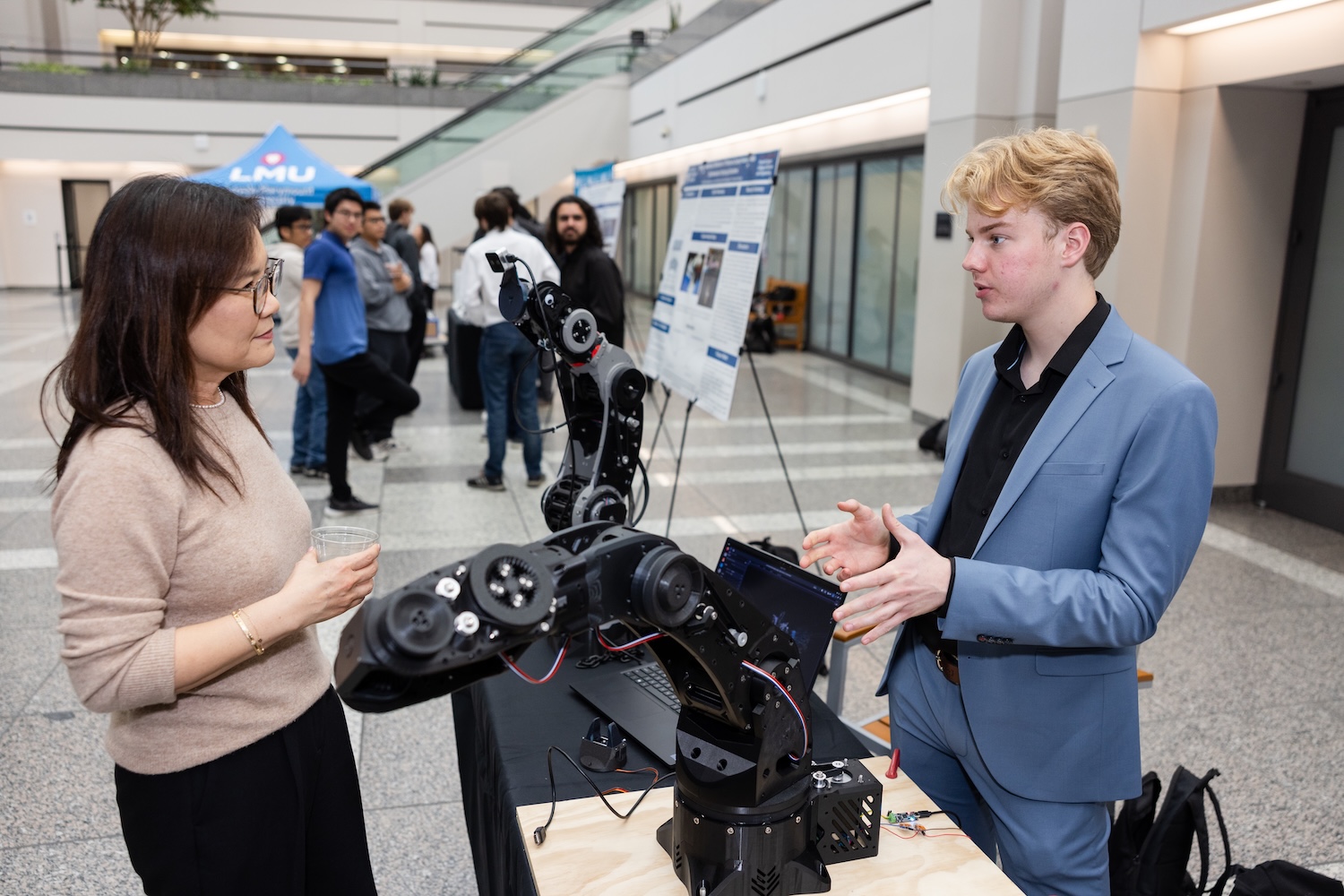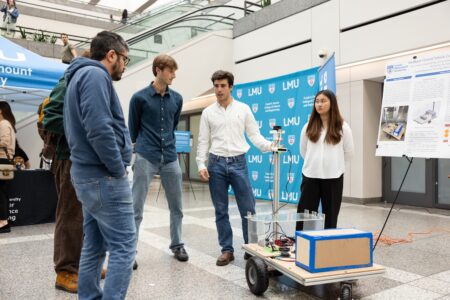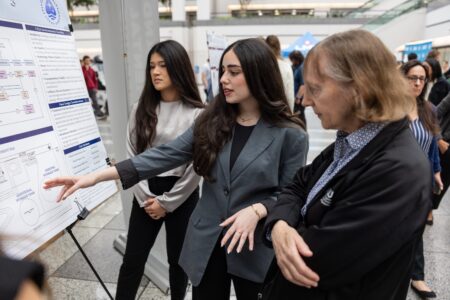 Dean Tina Choe learns about the capstone project of a student at the annual Engineering and Computer Science Design Showcase.
Dean Tina Choe learns about the capstone project of a student at the annual Engineering and Computer Science Design Showcase.
The 2025 Engineering and Computer Science Design Showcase marked a year of firsts and featured forward-thinking innovation at Loyola Marymount University.
Held in University Hall, the event brought together undergraduate and graduate students from across the Frank R. Seaver College of Science and Engineering to present their final projects. This year’s showcase included computer science students for the first time, expanding the event’s scope and underscoring the university’s growing emphasis on interdisciplinary collaboration and applied research.

Computer science major Matthew Lee created a rendering engine for a game he worked on with fellow computer science students, called EVE. “I did a lot of the backend rendering,” he said. “While it was complicated to understand, I learned so much about how pipelines and shaders work.”
Alexander Minor, a mechanical engineering sophomore with a minor in electrical engineering, built an AI-enhanced 3D-printed robotic arm. “It’s not just mechanical, not electrical, not just software,” he said. “It’s everything together.”
Graduate students also presented research that addressed real-world challenges in healthcare, materials science, and systems engineering. Their work reflected the depth of LMU’s graduate programs and the university’s focus on practical, impact-driven learning.
Genevieve Kaminski, a graduate student in healthcare systems engineering, developed a project aimed at improving patient documentation in clinical settings. “The big thing that I took away from this project was that communication is key,” she said. “Using technology in the right way can make a real difference.”

Ashley Kobylinski, a mechanical engineering graduate student, analyzed the fatigue properties of anodized aluminum alloys. “We were trying to find an alternative to chromic coatings, which are commonly used to prevent corrosion,” she said. “After a lot of testing, chromic still came out on top, but the project gave us valuable insight into how different alloys respond to treatment.”
Other projects included a robotic assistant for restaurant service, analysis of CAD design accuracy, and the effects of heat treatment on 3D-printed metals. Students demonstrated not only technical expertise but also the ability to communicate their work clearly—an essential skill in engineering and computer science.
To view highlights from the event and explore the full list of projects, visit Seaver’s Instagram or scroll through a slideshow of students presenting right here.